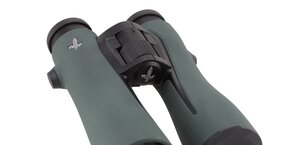Porro or Roof? That is the question!
3. Comparison
Just to make a sure of that I’ve looked through parameters of most binoculars from middle and high level equipment. Altogether I’ve taken into consideration 184 binos type of Docter, Fujinon, Kahles, Leica, Leupold, Minolta, Minox, Nikon, Olympus, Optolyth, Pentax, Steiner, Swarovski, Vixen and Zeiss. Then I’ve grouped them into small (30-35), middle (40-42) and large (50-60). In those groups I’ve tried to compare roofs and porros in relation to their approximated weigh and size. Conclusion is slightly different than manufacturers suggest...
As far as weight is easy to compare, the size is more complicated. We all know that roof binos are notably narrower than porro binos but they are definitely longer. To compare them fairly we have checked their total physical surface area by looking down on them.
Please Support UsIf you enjoy our reviews and articles, and you want us to continue our work please, support our website by donating through PayPal. The funds are going to be used for paying our editorial team, renting servers, and equipping our testing studio; only that way we will be able to continue providing you interesting content for free. |
- - - - - - - - - - - - - - - - - - - - - - - - - - - - - - - - - - - - - - - - - - - - - - - -
Considering small size binos (up to 35mm),manufacturers promises seem to be kept. Arithmetic average weight of roof prism binoculars amounted to 586g, whereas arithmetic average weight of porro prism binoculars amounted to 670g. Arithmetic average roof prism binos physical surface area amounts to 14936 cm2 and porro prism type 20419 cm2. So in this group, roof prism binos are 37% heavier and 14% larger than porro prism binos.
Nevertheless we may be quite surprised by measure results of medium binos which are mainly use in hunting, bird watching and tourism. Arithmetic average weight of roof prism binoculars (40-42mm) amounted to 759g, whereas arithmetic average weight of porro prism binoculars amounted to 696g - so about 10% less! Considering physical surface area roof prism binos are still more compact where proportion of roofs to porro is 19215 for 24682 cm2 but in compare to small binos, the advantage decreased from 37% to 28%.
In case of the largest binoculars we noticed a similarity in weight. Arithmetic average weight of roof prism binoculars (50-60mm) amounted to 1176g whereas porros equivalents are 100g lighter again! But in spite of roof prism binoculars are longer, it still wins in the average physical surface area which amounts to 28680cm2 in relation to porro where physical surface area amounts to 36460cm2. Roof advantage of compactness in this case amounts 27%






